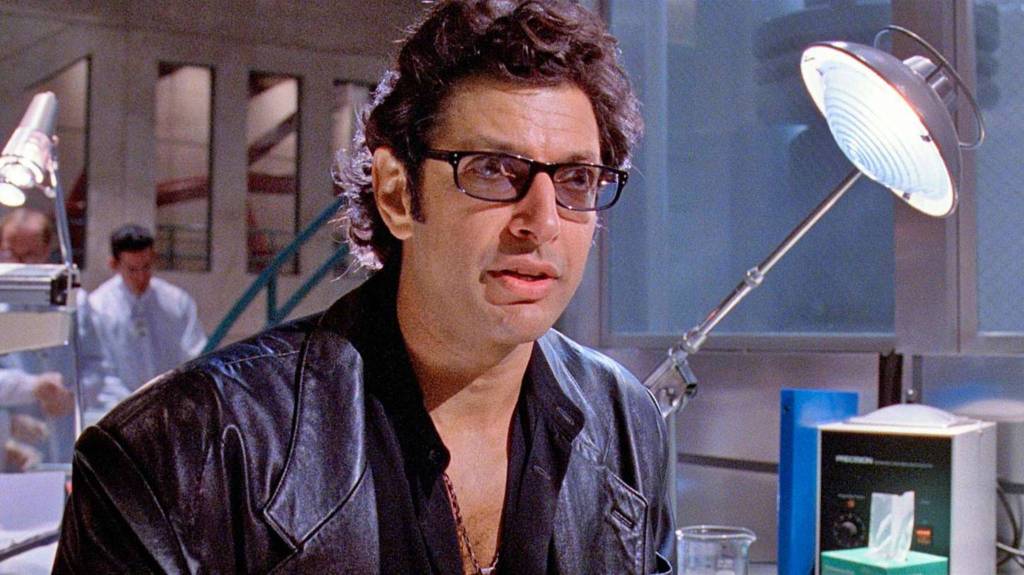Jurassic Park fans still have one big unanswered question that the franchise has never addressed. Directed by Steven Spielberg and based upon Michael Crichton’s 1990 best-selling novel, Jurassic Park focuses on a group of scientists and young children brought to an island full of genetically recreated dinosaurs, with the island being built as an upcoming amusement park. However, a series of security failures in Jurassic Park set the dinosaurs loose upon the island, forcing the small group of humans into a fight for their survival.
Videos by ComicBook.com
Upon its release in 1993, Jurassic Park became the worldwide box office champ at the time, and spawned the ongoing and highly popular Jurassic Park and Jurassic World movies. With that said, no sci-fi franchise is ever completely free of plot holes, and Jurassic Park fans have one they’re still ruminating over in the form of the park’s back-up plan known as the Lysine contingency. Not only does the Jurassic Park franchise give the Lysine contingency the most casual of explanations, but it also turns out that it, like the DNA of the cloned dinosaurs themselves, is full of holes.
Jurassic Park‘s Lysine Contingency Explained

In the third act of Jurassic Park, several of the human survivors debate the best way to handle the dinosaurs being freed upon the island. Jurassic Park’s game warden Robert Muldoon (Bob Peck) suggests they consider utilizing the Lysine contingency, revealed as the intended failsafe in case the dinosaurs of the park ever managed to escape the island.
As explained by Jurassic Park’s tech expert Ray Arnold (Samuel L. Jackson), the dinosaurs were re-created by Dr. Henry Wu (B.D. Wong) with a built-in protein metabolism defect. Specifically, this defect prevents the dinosaurs from producing the amino acid Lysine in their systems. As Arnold matter-of-factly puts it, “Unless they’re completely supplied with Lysine by us, they slip into a coma and die.” While John Hammond (Sir Richard Attenborough) and Jurassic Park clearly spared no expense in putting multiple security measures in place on the island, the subsequent installments of the Jurassic Park franchise show how ineffective the Lysine contingency would have ended up being even if it had been put to use.
[RELATED: What Will Jurassic World 4 Be About?]
Why the Lysine Contingency Has Left Jurassic Park Fans Confused

In The Lost World: Jurassic Park, Dr. Sarah Harding (Julianne Moore) finds an explanation for why the dinosaurs survive on Site B without Jurassic Park staff providing them with Lysine. Per Harding’s finding, the island’s population of herbivore dinosaurs, “They eat mostly agama beans, soy, anything Lysine-rich, and the carnivores, well they eat the herbivores.” While this explains how the dinosaurs have managed to survive on Site B, what the Jurassic Park franchise has never accounted for is the park’s Lysine distribution methodology to its dinosaur population. It goes without saying that simply sending park staff into the dino pens with syringes to give Lysine injections to Jurassic Park’s apex predator the T-Rex or the park’s intelligent killing machines of velociraptors is far too dangerous a method to even consider, but with Dr. Ian Malcolm providing a survival timeline for the Lysine-deficient dinosaurs of “seven days” in The Lost World, getting the dinos their necessary Lysine supply also had to be a priority.
It seems the most efficient method of providing the dinosaurs with enough Lysine to survive would be going off of Harding’s discovery by feeding herbivores Lysine-rich vegetation and feeding Lysine-supplied herbivores to the carnivores. However, this opens its own can of worms as to why anyone in The Lost World is surprised at all that the dinosaurs have made it without human-supplied Lysine. Additionally, this would also introduce the complex and decidedly messy logistics of feeding Lysine-consuming herbivores to the carnivores, which would undoubtedly create a huge problem of having to clone twice as many herbivores and regularly rotate them into the park, which would absolutely wreak havoc on Jurassic Park’s budget.
Moreover, another point of Lysine contingency confusion lies in how much of a non-sequitur it ends up being in Jurassic Park‘s story, with Hammond immediately shutting Muldoon’s suggestion down as being “completely out of the question.” Considering the chaos and human casualties unfolding in the park (to say nothing of Hammond’s own grandchildren being lost in the park), Hammond’s dismissiveness of using the Lysine contingency is quite a question mark. To be fair, Hammond, at this point in the movie, is still clinging to the hope that he can get the park back under his control again, so this could account for his reluctance to use the Lysine contingency. Even then, the entire idea of the Lysine contingency would hardly be a solution with the necessary immediate effectiveness in an emergency situation like that of Jurassic Park, with the humans forced to seek refuge from dinosaurs still able to make it a week without Lysine.
[RELATED: Jurassic Park Fan Adds Scientifically Accurate Raptors Into the Movie (And It’s Hilarious)]
The Lysine Contingency Illustrates Ian Malcolm’s Point About Jurassic Park

In the end, the entire concept of the Lysine contingency is one more piece of evidence that the warning by Jeff Goldblum’s Dr. Ian Malcolm of Jurassic Park’s inevitable collapse was always bound to happen. Early on in Jurassic Park, Malcolm is highly skeptical of the park’s long-term sustainability and of InGen’s use of genetic engineering to bring dinosaurs into the modern world, which Malcolm likens to “a kid that’s found his Dad’s gun.” Malcolm is also equally skeptical of the Jurassic Park staff’s methods of security and population control, stating his immortal rebuttal to both of, “Life, uh, finds a way.”
Given how easily the dinosaurs continue to survive despite their Lysine deficiency, Malcolm is clearly correct in pointing out the fallacy of Jurassic Park’s scientists trying to control creatures they don’t fully understand in an environment with countless unpredictable variables. Moreover, with the flaws in the Lysine contingency so easy to point out in a fictional context, its gaping holes should have always been obvious to John Hammond, Dr. Wu, and everyone else overseeing Jurassic Park. The Lysine contingency was always doomed to failure, as evidenced not only by Ian Malcolm’s warnings, but the confusion of Jurassic Park fans over how easily the franchise handwaves it away, as well.








